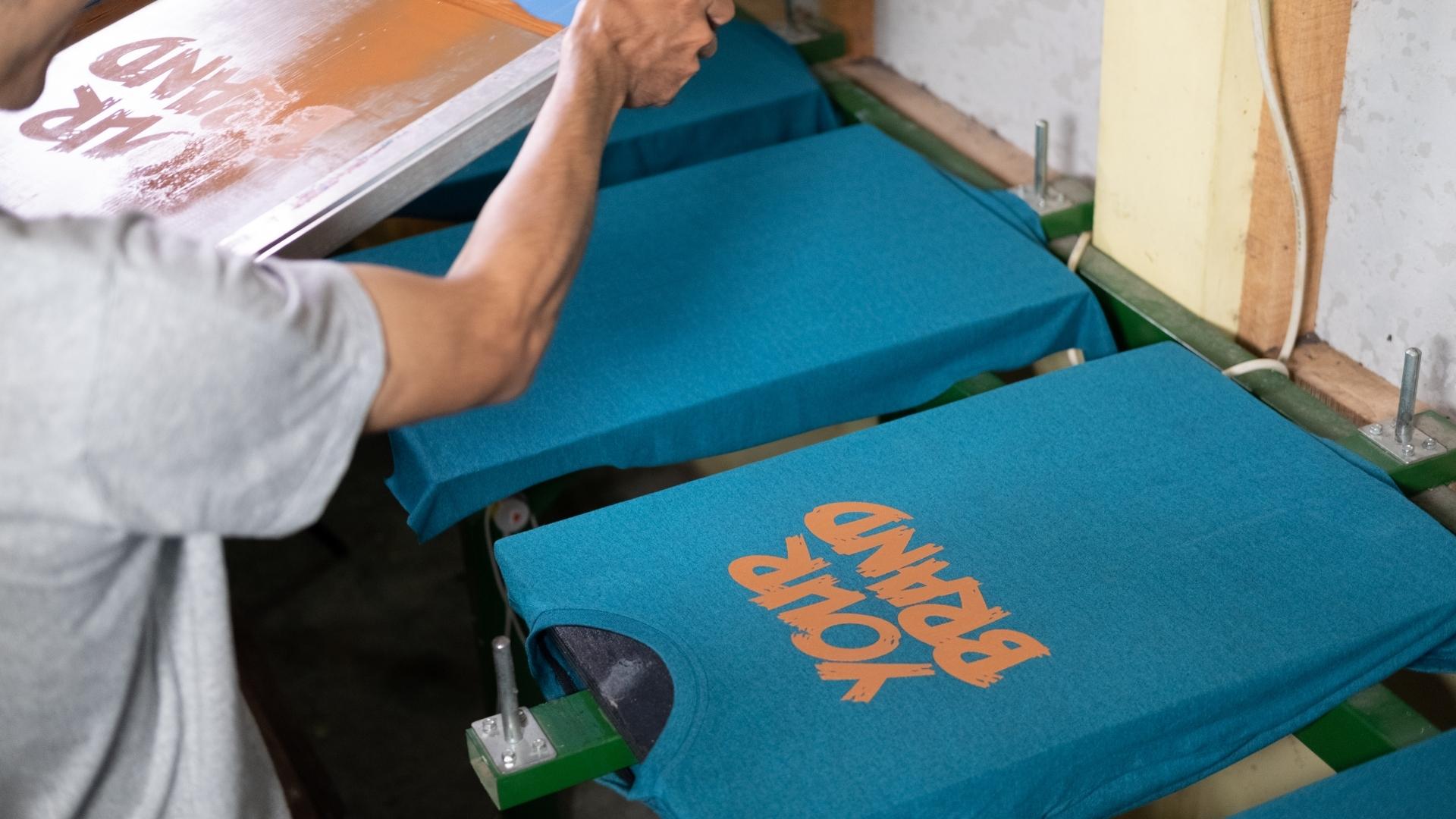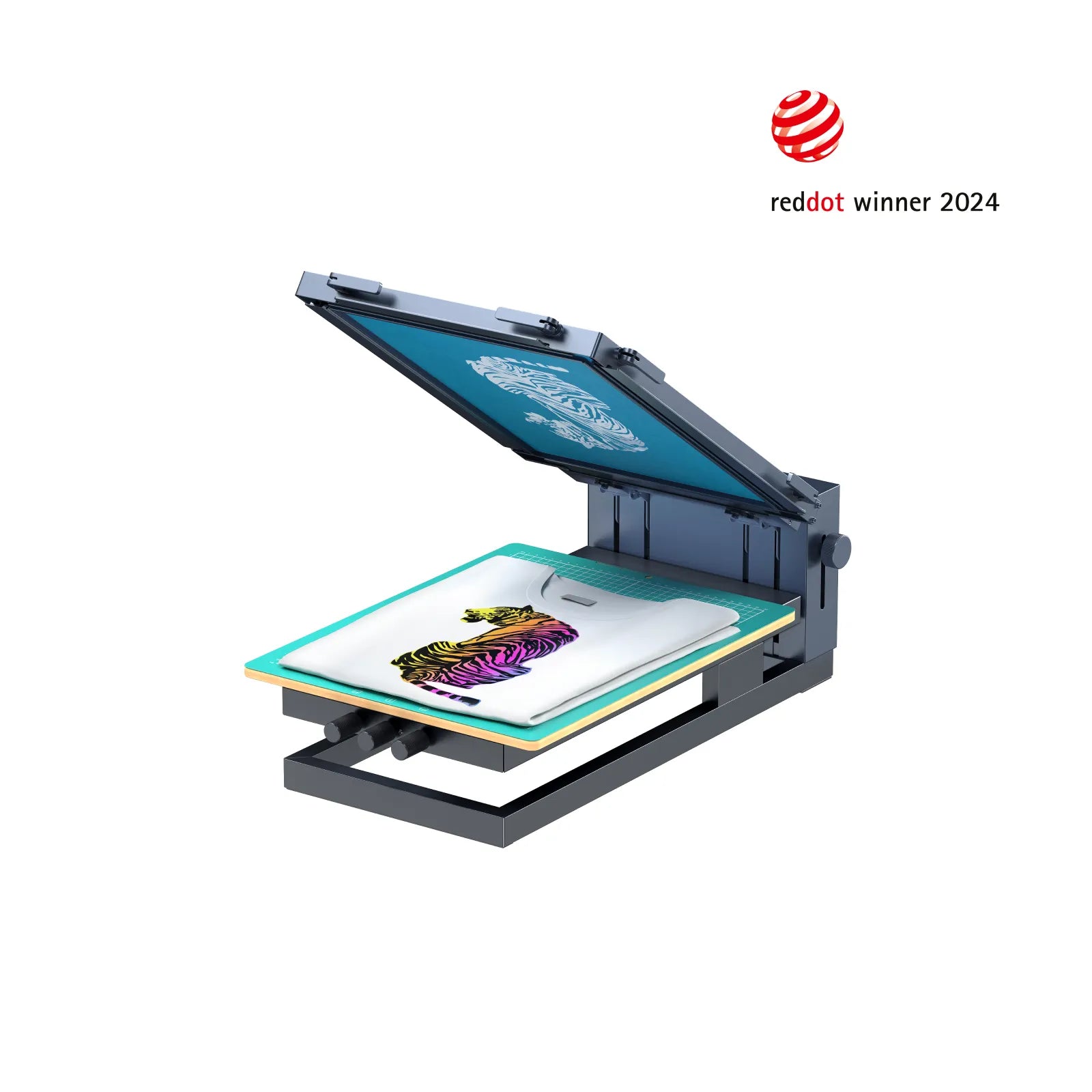ChatGPT said: 10:9 Design Embroidery success stories: how clients upgraded their brand identity
Discover the Numerous Types of Screen Printing Techniques for Your Next Task
Screen printing offers a varied variety of strategies that can improve any kind of innovative project. From conventional approaches like serigraphy to contemporary technologies such as direct-to-garment printing, each method has its unique benefits. Specialized choices, including eco-friendly and metallic inks, introduce much more opportunities. Understanding these methods can substantially impact the final outcome. Nonetheless, the difficulty hinges on choosing the most ideal method for particular demands and desired results. What variables should one take into consideration?

The Fundamentals of Screen Printing
Although screen printing may seem complex, it is basically an uncomplicated procedure that includes moving ink with a mesh screen onto various surfaces. The strategy starts with the development of a stencil, which specifies the design to be printed. This pattern is connected to a mesh screen, generally constructed from polyester or nylon. As soon as the stencil is in place, ink is related to the screen and pressed through the mesh utilizing a squeegee, causing the preferred pattern being printed on the underlying material.
Screen printing can be performed on a wide variety of substratums, consisting of fabric, paper, and plastic, making it a flexible selection for different jobs. The procedure permits for detailed layouts and dynamic shades, making it prominent in industries such as marketing, art, and style. Understanding these essentials furnishes people with the foundational knowledge needed to explore advanced methods in screen printing.
Conventional Screen Printing Techniques
Conventional screen printing strategies have actually been used for centuries, protecting the craftsmanship and artistry of this technique. This strategy utilizes a mesh screen to move ink onto a substrate, such as textile or paper, allowing for long-lasting and lively layouts. The process starts with developing a stencil, which obstructs particular areas of the screen to control where the ink will be used.
One popular method is serigraphy, often utilized for imaginative prints and minimal versions. Another is using water-based inks, which are green and give a soft feeling on textiles - 10:9 Design Texas. Additionally, typical methods can consist of hand-operated printing, where artisans use ink with a squeegee, ensuring precision and focus to information
These strategies stay valued in the sector for their tactile high quality and the one-of-a-kind textures they create, appealing to both makers and consumers that value the heritage of screen printing.
Digital Screen Printing Innovations
As the demand for faster production and modification in the printing industry has risen, electronic screen printing advancements have arised as a game-changer. This modern technology mixes traditional screen printing techniques with electronic processes, permitting fast prototyping and intricate layouts that were formerly hard to achieve. One considerable advancement is the intro of direct-to-garment (DTG) printing, which assists in high-quality, full-color prints on various fabrics without the need for displays. Additionally, developments in ink formulations have actually resulted in environmentally friendly options that maintain vivid colors while reducing environmental influence. The usage of automated systems better streamlines manufacturing, lowering labor prices and enhancing precision. These advancements not just cater to small set orders and individualized designs however likewise permit quicker turnaround times, making them ideal for companies concentrated on conference client needs in a hectic market. Digital screen printing, as a result, stands for a vital evolution in the domain name of printing methods.
Specialty Screen Printing Methods
Checking out specialized screen printing approaches reveals a diverse array of methods that push the limits of creative thinking and capability in the printing industry. Among these, glow-in-the-dark inks supply an one-of-a-kind aesthetic result, making designs come alive in low-light conditions. Metal inks, understood for their glittering surface, add a touch of high-end to printed materials. An additional ingenious approach is discharge printing, which gets rid of dye from the fabric as opposed to adding ink, leading to a soft, classic feel. High-density printing creates a raised texture on the surface, boosting responsive engagement. Furthermore, water-based inks are gaining appeal for their vibrant colors and minimized ecological influence. Each of these specialty strategies satisfies details layout needs, making it possible for brands and artists to develop standout items that reverberate with their target markets. By leveraging these approaches, organizations can raise their screen printing jobs to brand-new heights, making sure memorable perceptions.
Eco-Friendly Screen Printing Options
Environmentally friendly screen printing options are acquiring traction as the industry changes in the direction of sustainability. Sustainable ink choices and making use of naturally degradable materials are key components in decreasing the environmental influence of the printing process. By embracing these techniques, screen printers can add to a more sustainable future while maintaining premium outcomes.
Lasting Ink Choices

Biodegradable Materials Usage
As the screen printing industry advances, the consolidation of biodegradable materials is coming to be progressively essential for ecologically conscious practices. Manufacturers and designers are currently discovering inks and substrates made from all-natural, eco-friendly sources that decay more efficiently than standard equivalents. These naturally degradable options lower plastic waste and lessen environmental impact, lining up with the growing need for lasting products.
Common instances consist of water-based inks and organic cotton fabrics, both of which minimize damaging chemicals and promote eco-friendliness. Brands that embrace these products usually enhance their market appeal, bring in consumers that focus on sustainability. As recognition of environmental problems remains to increase, the change in the direction of biodegradable materials in screen printing is most likely to obtain momentum, promoting a greener market standard.
Selecting the Right Method for Your Job
How can one figure out one of the most suitable screen printing strategy for a particular task? The choice depends upon several variables, consisting of the material to be published on, the intricacy of the style, and the preferred manufacturing volume - 10:9 Design Abilene. As an example, direct-to-garment printing is ideal for elaborate layouts with countless shades, while standard screen printing succeeds for bigger runs of simpler graphics
Furthermore, consideration of the end-use of the published item is crucial. For exterior applications, methods that use sturdiness and climate resistance, such as plastisol ink, may be preferred. Conversely, environmentally-conscious tasks might take advantage of water-based inks or eco-friendly products.
Ultimately, recognizing the task's unique demands permits for an informed option, ensuring both aesthetic allure and practical durability. By reviewing design intricacy, material compatibility, and production range, one can efficiently pick the most appropriate screen printing technique to fulfill their job's objectives.
Often Asked Concerns
What Is the Background of Screen Printing?
Screen printing stemmed in ancient China around 1000 AD, advancing with Japan and Europe. By the 20th century, it became prominent in business art and fashion, transforming just how styles were produced and distributed globally.
How Do I Prepare Artwork for Screen Printing?
To prepare art work for screen printing, one should guarantee high resolution, make use of a suitable shade mode, create different layers for each and every color, and convert message to details, ensuring compatibility with the printing process and wanted outcome.
What Products Are Finest for Screen Printing?
The very best materials for screen printing include high-grade inks, sturdy screens, and ideal substratums like cotton, polyester, or blends. Additionally, using proper solution and squeegees can enhance the printing procedure and last results.
Can I Screen Print in your home?
Yes, screen printing in the house is feasible. With the best materials, configuration, and techniques, individuals can create high-quality prints. Nonetheless, cautious factor to consider of office and equipment is vital for successful outcomes.

What Are Common Mistakes in Screen Printing?
Common mistakes in screen printing consist of incorrect exposure times, inadequate ink consistency, misalignment of displays, insufficient cleaning of products, and overlooking to examine prints. These mistakes can endanger the high quality and precision of the last product.
Screen printing might appear complicated, it is basically check here a simple procedure that involves moving ink with a mesh screen onto different surfaces. As the demand for faster production and personalization in the printing sector has risen, digital screen printing technologies have actually emerged as a game-changer. Discovering specialized screen printing methods discloses a varied variety of methods that press the borders of creativity and capability in the printing market. The best materials for screen printing include high-quality inks, long lasting screens, and suitable substrates like cotton, polyester, or blends (10:9 Design near me). Common blunders in screen printing consist of improper direct exposure times, inadequate ink uniformity, misalignment of displays, insufficient cleansing of materials, and disregarding to evaluate prints